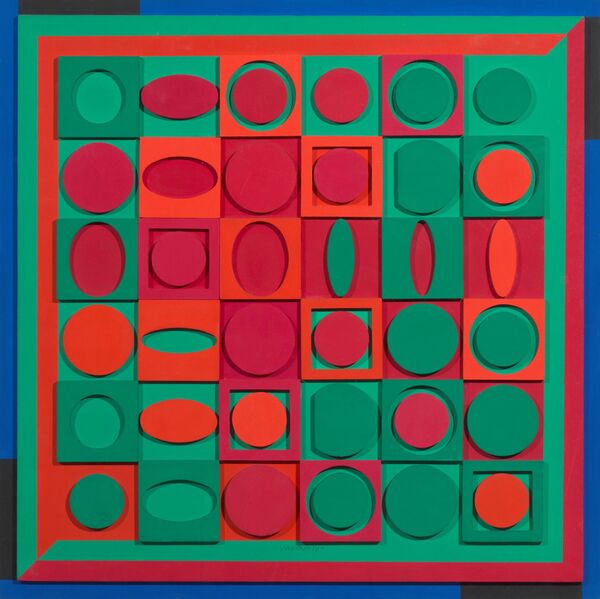Victor Vasarely
(Hungarian/French, 1906-1997)
Victor Vasarely was born in Pécs, Hungary in 1906. He is considered to be one of the central figures within the Kinetic, or op-art, movement. After two years of medical school, he left his studies to pursue a career as an artist. There, he learned traditional academic painting and he began to experiment with geometry, perspective and optical illusions. In the late 1920s he enrolled at Műhely in Budapest which was a private art school akin to the Bauhaus where similar foundations were taught.
Whilst in Hungary he worked as a poster artist; his works of the mid-1930s posses a graphic quality that comes through in the dual-tonality, bold imagery and size of the work. In combination with his background as a graphic artist, the textural effects and dimensionality create what are considered to be some of his first examples of op-art. Toward the end of the 1940s he developed a unique style that favoured abstraction as a mode of representation. Denise René organized an exhibition in Paris called Le Mouvement (the motion). There, Vasarely exhibited alongside Duchamp, Calder and Manray.
In 1970, Vasarely established his own museum that housed over 500 works in Gordes. There is also a Vasarely foundation located in Aix-en-Provence, as well as a museum in Pécs and Zichy Palace in Hungary. Before his death in 1997, he won a number of awards including the Guggenheim Prize (1970), Chevalier de l'Ordre de la Legion d'honneur, and the Gold Medal at the Milan Trienniale.

